Understanding Property, Casualty & Liability Insurance: What Every Policyholder Should Know
Most people think insurance is one of those “set it and forget it” financial products. You buy a policy, pay your premiums, and hope you never need to use it. But here’s the reality: the insurance landscape changes faster than most people realize, and what protected you five years ago might not be enough today. With property and casualty insurance premiums growing by nearly 10% in recent years and liability claims becoming more expensive, understanding your coverage has never been more important.
Property, casualty, and liability insurance form the backbone of personal financial protection, yet many policyholders don’t fully understand what they own or what gaps might exist in their coverage. Whether you’re a young professional renting your first apartment or a wealthy family with multiple properties, the principles remain the same: you need the right coverage at the right amount to protect against financial devastation. The key is knowing what “right” means for your specific situation.
Key Takeaways
- Property and casualty insurance companies in the U.S. wrote over $880 billion in premiums in 2024, with a 10.4% increase from the previous year
- Standard homeowners and auto policies often provide insufficient liability coverage for high-net-worth individuals, with liability coverage in these policies rarely exceeding $500,000 while severe injury cases can result in settlements of hundreds of thousands to millions of dollars
- Umbrella policies can provide an additional $1-10 million in liability coverage for as little as $150-300 annually
- Bundling multiple policies with one insurer can provide both cost savings and coverage benefits
- Regular policy reviews are essential as your wealth, lifestyle, and risk profile change over time
What Property, Casualty & Liability Insurance Includes
Property, casualty, and liability insurance is actually a broad category that covers multiple types of protection most people need in their daily lives. Understanding each component helps you see how they work together to create a comprehensive safety net.
Homeowners and Renters Insurance
Homeowners insurance protects both your property and your liability exposure as a property owner. It covers your dwelling, personal belongings, additional living expenses if you can’t live in your home, and liability if someone gets hurt on your property. The coverage extends beyond just fire and theft to include events like water damage, wind damage, and even theft of items when you’re traveling.
Renters insurance provides similar protection for tenants, covering personal belongings and liability but not the structure itself. Many renters skip this coverage thinking they don’t need it, but it’s often required by landlords and provides valuable protection at a low cost.
Auto Insurance
Auto insurance combines property protection for your vehicle with liability coverage for damage you might cause to others. Most states require minimum liability coverage, but these minimums are often inadequate for protecting your assets. Comprehensive and collision coverage protect your own vehicle, while uninsured/underinsured motorist coverage protects you when the other driver doesn’t have adequate insurance.
Umbrella Insurance
Umbrella insurance provides additional liability coverage that kicks in when your homeowners or auto insurance limits are exhausted. This coverage is crucial for protecting your assets from large lawsuits. A $1 million umbrella policy typically costs only $150-300 per year, making it one of the most cost-effective ways to protect significant assets.
Specialty Coverages
Depending on your lifestyle and assets, you might need additional specialized coverage. This could include coverage for valuable items like jewelry or art, watercraft insurance for boats, or recreational vehicle coverage for motorcycles or RVs. Each of these items creates both property and liability exposures that standard policies might not adequately address.
Common Gaps and Misconceptions
Even well-intentioned policyholders often have coverage gaps they don’t realize exist. These gaps can be expensive to discover during a claim, when it’s too late to fix them.
Underestimating Liability Exposure
One of the biggest misconceptions is that standard policy limits provide adequate liability protection. The liability coverage in home and auto policies rarely exceeds $500,000, yet severe personal injury cases can result in settlements reaching hundreds of thousands to millions of dollars. According to the Bureau of Justice Statistics, the median personal injury settlement is $31,000, but complex cases involving serious injuries can far exceed this amount, making even middle-income families vulnerable to financial ruin from a single serious accident.
Many people also underestimate their liability exposure from everyday activities. If you have a swimming pool, trampoline, or teenage drivers, your risk of a liability claim increases. Even volunteer activities like coaching youth sports can create liability exposure that your standard policies might not cover.
Property Coverage Inadequacies
Another common gap involves property coverage limits that don’t keep pace with rising costs. With construction costs and home values increasing rapidly, many homeowners are underinsured without realizing it. If your home is insured for $300,000 but would cost $450,000 to rebuild, you’ll face a significant shortfall if you have a total loss.
Personal property coverage often has sublimits for valuable items like jewelry, electronics, or collectibles. A standard homeowners policy might only cover $1,500 worth of jewelry, regardless of what you actually own.
Employment-Related Exposures
If you employ household help like nannies, housekeepers, or landscapers, you may need workers’ compensation coverage and employment practices liability insurance. Many homeowners don’t realize they can be held liable for workplace injuries or employment-related claims involving their household employees.
Why Liability Protection Matters as Wealth Grows
As your net worth increases, you become a more attractive target for lawsuits, and you have more to lose if a claim is successful. This creates a compelling case for increased liability protection.
Increased Target Risk
Wealthier individuals actually purchase more life and property insurance because they have more to protect, contrary to economic theories that suggested they might buy less. This pattern extends to liability coverage, where wealthy individuals face both higher lawsuit risk and larger potential judgments.
Attorneys often research defendants’ assets before deciding whether to pursue a case or how much to seek in damages. If you have significant assets, you’re more likely to be sued and more likely to face larger damage claims.
Asset Protection Considerations
Liability insurance serves as the first line of defense for asset protection. While certain assets like retirement accounts may have some legal protection, most of your wealth remains exposed to liability claims. Adequate insurance coverage protects these assets without requiring complex legal structures.
The general rule is to have liability coverage equal to your net worth, including your home equity, investment accounts, and future earning potential. For many successful professionals, this means coverage well above standard policy limits.
Policy Review and Bundling Strategies
Regular policy reviews ensure your coverage keeps pace with your changing needs and circumstances. What worked when you were starting your career may be inadequate as your wealth and lifestyle evolve.
Annual Coverage Assessment
You should review your insurance coverage at least annually, and more frequently if you have major life changes. This review should include checking coverage limits, deductibles, and any new exposures you might have acquired.
Pay particular attention to property values and replacement costs. Home values and construction costs can change significantly year to year, and your coverage should reflect current replacement costs, not what you paid for the home or what it was worth when you bought the policy.
Bundling Benefits
Most insurance companies offer discounts for bundling multiple policies, but the benefits go beyond just cost savings. When you have multiple policies with the same carrier, claims handling can be more efficient, and coverage coordination is simpler.
Bundling also allows for higher aggregate limits and broader coverage terms. A carrier that insures your home, cars, and umbrella policy can offer more comprehensive protection than if these coverages were spread across multiple companies.
Working with Specialists
As your insurance needs become more complex, consider working with agents or brokers who specialize in high-net-worth coverage. These professionals understand the unique risks and coverage needs of wealthy individuals and can access specialty markets that offer broader coverage terms.
They can also help coordinate coverage with your overall financial planning, ensuring your insurance strategy supports your wealth management and estate planning goals.
Work With Us
Property, casualty, and liability insurance form a critical foundation for protecting your financial future, but the complexity of coverage options and the importance of adequate limits make this an area where professional guidance is invaluable. As your wealth grows and your life becomes more complex, insurance decisions become more nuanced and the cost of mistakes becomes higher. Regular reviews and updates ensure your protection keeps pace with your evolving needs and changing risk profile.
At Avior, we understand that insurance is an integral part of comprehensive financial planning, not just a separate expense to minimize. Our team works with you to assess your current coverage, identify potential gaps, and coordinate with qualified insurance professionals to ensure you have appropriate protection for your unique situation. We help you balance adequate coverage with cost efficiency, ensuring your insurance strategy supports your broader financial goals. Schedule your annual insurance audit today and let us help you build a comprehensive protection strategy that evolves with your success.
Investment advisory services provided by Avior Wealth Management, LLC (“Avior”), an SEC registered investment adviser for informational purposes only and should not be construed as financial, tax, or investment advice. The information presented reflects market conditions as of the date of this communication and is subject to change. Past performance is not indicative of future results. All investments involve risk, including the loss of principal.
While we strive for accuracy, Avior makes no representations as to the accuracy, completeness, or reliability of the information contained herein. You should consult with your financial advisor or tax professional to discuss your individual financial situation before making any investment decisions.
Market conditions and economic data may fluctuate, and future outcomes are uncertain. This newsletter does not guarantee future results and should not be relied upon as a sole basis for making any financial or investment decisions. Please consider your own risk tolerance and investment goals when evaluating strategies such as stock allocations
No Comments
Sorry, the comment form is closed at this time.




